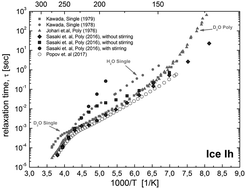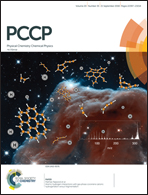Trap-controlled proton hopping: interpretation of low-temperature dielectric relaxation of ice Ih
Abstract
A microscopic model of the dielectric relaxation of ice at low temperatures is proposed. This model is based on the mechanism of proton hopping controlled by traps created by orientation defects. Using the multiple-trapping model an expression for the dielectric relaxation time is obtained, which describes the non-Arrhenius behavior of the temperature dependence of the ice relaxation time at temperatures below 155 K.



 Please wait while we load your content...
Please wait while we load your content...